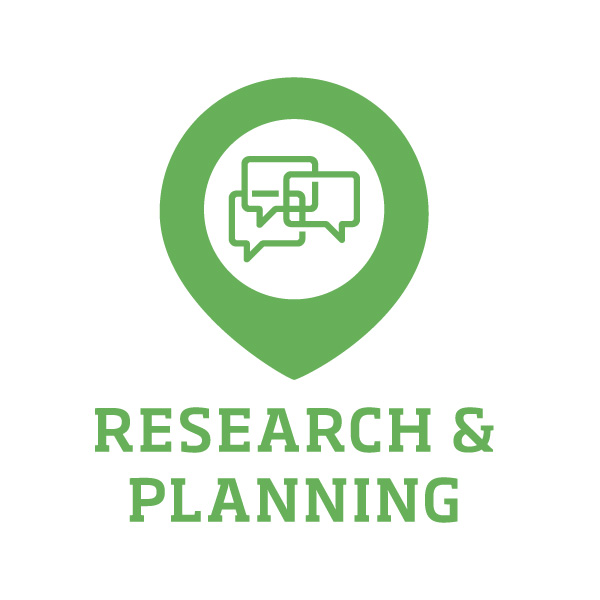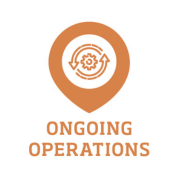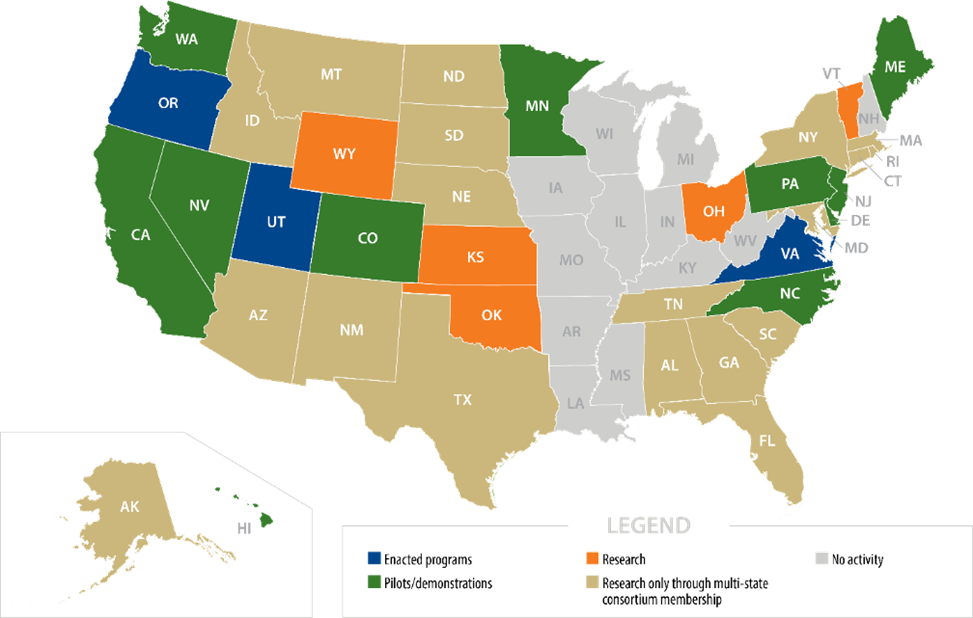DIRECTING RUC POLICY
As a legislator, legislative staff, or agency staff supporting the policymaking process, you need to understand the ins and outs of RUC to better inform your approach. Whether you are just getting started or have been working on road usage charging for a long time, this section explores everything you need to develop and direct the implementation of RUC policy.
RUC Basics
Why RUC?
As vehicles become more fuel efficient and the rate of electric vehicle adoption increases, less fuel is being purchased, resulting in less revenue for states to maintain their transportation infrastructure. The link between how much drivers use the roads and how much they pay for them has become broken, with some users contributing nothing to transportation funding. As a result, states are studying different funding alternatives to identify more long-term sustainable sources of revenue.
While many alternatives exist, states are coalescing around a promising source of sustainable funding—a road usage charge (RUC), which allows all users of the transportation system to help pay for it. This kind of alternative road-funding policy is sometimes called a mileage-based user fee (MBUF), a vehicle miles traveled (VMT) fee, or a distance-based fee (DBF). This research uses the term RUC.
Transitioning from the fuel tax, a source of revenue used in this country for over 100 years, calls for a fundamental examination of the way we pay for surface transportation infrastructure. It involves considerable research and experimentation, as well as problem-solving, policy development, and public outreach. Many states have begun exploring ways to implement RUC, but as of 2022, only three states (Oregon, Utah, and Virginia) have enacted a RUC program. These states have chosen to deploy RUC incrementally and have begun a migration to distance-based charging for certain classes of eligible vehicles. As more states study RUC, identifying implementation successes and challenges from existing RUC programs will aid states in their quest to find sustainable transportation funding. Adding to the complexity of this challenge is the fact that the fuel tax has two components: the state motor fuel tax and the federal motor fuel tax, each collected by separate authorities.
Where is RUC being considered?
The exploration of RUC as an alternative transportation funding mechanism has been underway in the United States since the early 2000s.
As of 2022, Oregon, Utah, and Virginia were the only states to have legislatively enacted voluntary RUC programs where eligible vehicle owners can opt in to the RUC program and pay a RUC in lieu of paying special registration fees and/or fuel taxes. Ten states have conducted or are conducting pilots, and five states are currently in the research stage. Several states are learning from those around them through memberships in multistate consortia like RUC West (a consortium of 19 state departments of transportation that share best practices, ideas, and information on RUC) and The Eastern Transportation Coalition (a partnership of 17 states and Washington, D.C. focused on the future of transportation). Only 12 states have engaged in little to no activity exploring this alternative revenue mechanism.
RUC Components
Most road pricing projects and programs progress through the following four stages. The steps involved in each stage have been organized into a series of building blocks that represent the key components of building and making RUC policies and systems. Explore the following RUC stages and their associated building blocks described below.

Research and Planning
This stage encompasses all RUC activities prior to the passing of legislation, including research, planning, and outreach. Any pre-legislative pilots or demonstrations are included in this stage, including technical design and operations work. Otherwise, the focus of this stage is developing policy, performing financial analyses, establishing communication and outreach activities, and supporting the passage of legislation. Many activities that begin in the research and planning stage continue in later stages.
Research and Planning Building Blocks for Policymakers
Setup
This stage begins with the passage of legislation to create a voluntary or mandatory RUC program, and it continues until the program starts live operations. Much of the activity in this stage involves specifying, procuring, and testing the RUC system. This stage also includes developing program communications, organizational design, and customer service activities to ensure a smooth program launch. Some activities that begin in this stage continue in later stages of the RUC program.
Setup Building Blocks for Policymakers

Ongoing Operations
This stage begins when the RUC program goes live and continues thereafter. It involves live operations of the RUC system and includes all activities related to system operations, system reporting and evaluation, and enforcement.
Ongoing Operations Building Blocks for Policymakers

Transitioning and Growing
This stage occurs in parallel with other stages. Some transitioning and growing activities may begin as early as the research and planning or setup stage. These activities continue even as the program enters live operations and continue as the RUC program expands. This stage involves all activities relating to planning for the growth of the RUC program and the transition from current funding mechanisms to RUC. Achieving transition and growth requires policy and operational planning, economic forecasting activities, and collaboration with other jurisdictions.
Transitioning and Growing Building Blocks for Policymakers
Implementation Pathways
There are multiple ways to approach RUC implementation.
Opportunities for implementation of RUC will depend on which stage of RUC a jurisdiction is in.
Legislatively, there are a number of pathways available for RUC states, both before and after legislation and the legislative process:

Dive Deeper
Resources for Lead RUC Agencies
Resources for Communications Professionals
